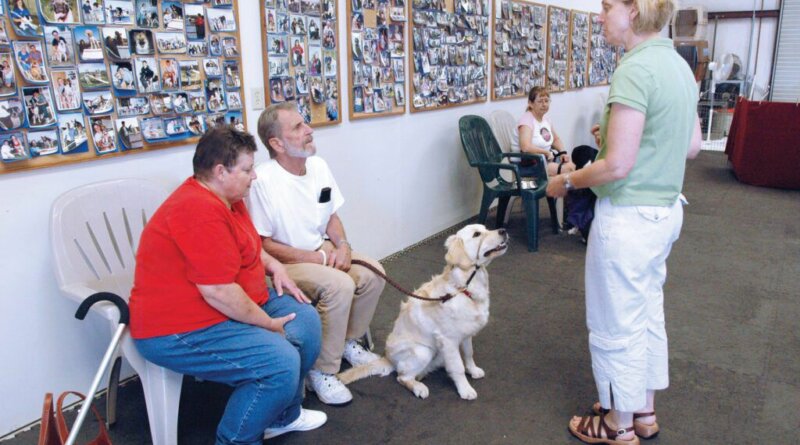What would make you sign up for a dog-training class?
I’ve paid to take group dog-training classes a number of times – even though I know how to and am even pretty good at training my own and other people’s dogs.
I have had slightly different reasons for wanting to take classes with each of my three dogs.
When I adopted Otto in June 2008, he was about 7 months old, but I signed up for some basic training classes to update my own timing and coordination skills so I could best communicate with my adolescent dog who had an uncertain origin. He had some quirks and fears and I wanted to make sure that I was doing everything right to gain his trust and want to work with me.
In later years, I signed us up for some agility classes; I thought I might try to take Otto to an agility competition someday, though we never did do that. Otto enjoyed the running around and negotiating the various obstacles, and he was so happy doing it, that it was sheer fun for me, too.
When I adopted Woody in January 2016, he was just a little pup, 9 or 10 weeks old. But I knew he was going to be a big, strong dog with a bully-breed look, and I wanted to make sure that I super-socialized him and trained him to be very compliant in any setting. I didn’t want people to judge him or be afraid of him based on his looks; I also wanted him to learn to behave well and pay attention to me when there were other dogs present. We took six-week Puppy 1 and then Puppy 2 courses, and later, also took some introductory agility courses.
Partly due to the limited class offerings because of Covid, and partly because I was hemming and hawing for months and months over whether to keep my youngest dog, Boone, whom I had started fostering when he was just about 6 or 8 weeks old, I never signed him up for puppy classes. When I finally got around to signing us up for an adolescent class, I was horrified to see how high-strung he was in class. He could focus on me very well, but it required some effort on his part. Instead of taking treats nicely like he can at home or when we are out walking, he lunged and grabbed for them in a frantic way that revealed his tension in the group-class setting. He needs a lot more practice and classes to learn to relax in a group setting.
Dog-training classes can be expensive, especially if they take place in a pleasant, spacious, climate-controlled location with safe footing. But classes are one thing I am always happy to pay for; I think of them as an investment in my relationship and good communication with my dogs, their good behavior anywhere I take them, and their own comfort and safety in public. I want them to be confident, secure, and well-mannered wherever we find ourselves, whether it’s a hotel we’ve had to stay in because we’ve been evacuated due to a wildfire or a friend’s home we’re visiting for the weekend. And I don’t want anyone dreading our arrival, worried about their carpets or cats or kids!
Classes are not just for puppies or problematic behavior
However, unless someone has a new puppy, or a dog with a vexing behavior that is causing problems for the human family, most dog owners don’t take dog-training classes! I wish there was some data about how many dog owners pay for any sort of dog training; I’m not aware of any organization that keeps these statistics (if you’re aware of some, please let me know!). My own experience is that very few people do.
And, given my job, I am often asked by friends or family about their dogs’ behavior issues – separation anxiety, reactivity on leash, pulling on leash, excessive barking, and so on. No matter what the question is, I always recommend consulting a local trainer and/or taking a basic training class. And nearly always, the response is, “No, we don’t need a class, it’s just this one problem we’re having.” But in my view, if my friends or family members knew even just a little bit more about training, not only would the problem behavior improve, their entire relationship with the dog would improve, too.
I think of a basic group training class as the equivalent of a high school speech class; it’s where you learn to communicate in a clear and effective way, instead of shouting nonsensically at others, arguing with people ineffectively, and failing to get your needs met. A single multiple-week course would help anyone get to know and understand their dog better and communicate with the dog better, which would likely help the dog understand what the heck is expected of him better, too – which would surely relieve some of the anxiety that’s likely driving some of his problematic behavior!
So many owners seem to have the expectation that their dogs should understand conversational English by the age of 4 or 5 months and somehow just know how to behave calmly in any setting. And most people manage to teach their dogs a few basics: sit (usually), come (sometimes), and walk on a leash (sort of). But if you ask the average dog owner how they would teach a dog to perform a specific skill on cue – and you made that skill something that the average dog owner does not expect their dog to know, say, pushing a ball with their nose into a soccer goal, or “waving” a front paw in the air – few people would know how to systematically shape that behavior using well-timed markers and rewards. In my opinion, once you’ve learned the basic steps to and mechanics of teaching a dog to perform any behavior on cue, you should be able to teach them any other behavior. And that’s what basic training classes are for!
Anyway, I’m curious about our readers: Have you taken any classes with your current dogs? If so, what classes did you take or are you taking? And if not, why haven’t you?




